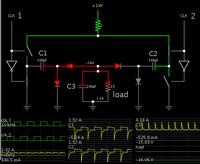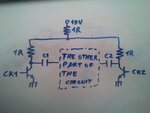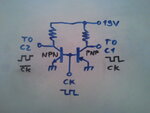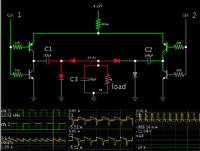KlausST
Advanced Member level 7
Hi,
Vfd is the forward voltage drop of the diode at given current. Find in the diode datasheet
Rdc is the dc winding resistance of the inductor. Find in the inductor datasheet
Rhs is the max. On resistance of the fet. Internal fet: find in the switcher datasheet. External fet: Find in the fet datasheet.
If you only need an estimation (or don't have the data by hand) of the values, then you can use these (three) values from the example in the application note. The results will be very near to the true results...
I know it's a hard way to go... especially at the beginning.
But next time everything seems much easier.
Good luck
Klaus
Vfd is the forward voltage drop of the diode at given current. Find in the diode datasheet
Rdc is the dc winding resistance of the inductor. Find in the inductor datasheet
Rhs is the max. On resistance of the fet. Internal fet: find in the switcher datasheet. External fet: Find in the fet datasheet.
If you only need an estimation (or don't have the data by hand) of the values, then you can use these (three) values from the example in the application note. The results will be very near to the true results...
I know it's a hard way to go... especially at the beginning.
But next time everything seems much easier.
Good luck
Klaus



